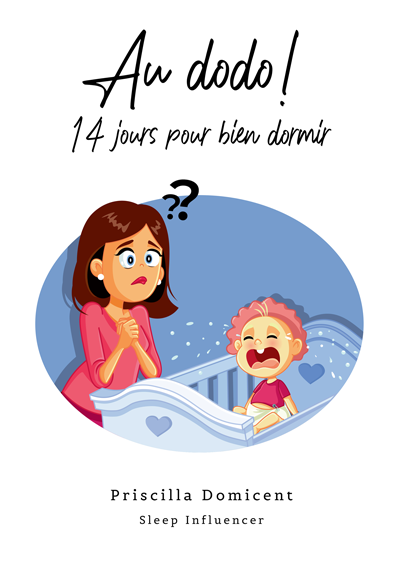It’s a time that many parents know is coming, but they dread nonetheless. Sooner or later, your toddler will state: “No, I really don’t want to nap now.” If it’s getting harder and harder to put your toddler down in the morning, and she is fighting you, it may be time to transition to one nap.
I know what you’re thinking. How is this going to work? If she looks tired one morning, should I put her to sleep or do I have to keep her awake? Is she going to be super cranky if she doesn’t have that morning siesta? It’s a bridge we all must cross at one point, kin to a kindergarten graduation. It will happen, one way or another.

It’s (all) about timing
It is an open secret that babies and toddlers need a lot of sleep, both during the night and the day. Those who are sleep deprived often become crying and cranky children and few things can distract or calm them. So, how can you know it’s time to make that transition?
You may get the feeling, “one nap is not enough and two is too many.” Don’t worry – this is normal!
The important part about transitioning to one nap is to make sure you follow your child’s cues. Since every child has different sleep needs, watch your toddler, not the calendar. Just because your neighbor’s 17-month old is still napping twice a day, does not mean that your child has the same sleep needs. Avoid comparing and wait until she gives you the signal.
Also, start the nap transition at an ideal time, i.e. when you do not expect any other changes in her routine for the next 3 weeks. For example, avoid nap coaching if you are planning to travel for the holidays or to move in a new house.
Create a good nap environment
Having an optimal sleep environment for your toddler will help her to sleep better and longer. Here are 5 important elements that set the stage for a good nap environment:
- Go through a short version of the bedtime routine in order to send your toddler the message that it is time for her body and mind to slow down. Use a dim light and enjoy calm activities during the naptime routine.
- Once it is time to nap, turn of all the lights and make sure the room is dark. You should not be able to see your hand when stretching your arm. Think about installing black-out shades or curtains if needed.
- Put on the white noise machine or the fan if you worry that the nap could be disrupted by in-house or external nuisances.
- Hand her favorite blankie, lovey or stuffed animal in order to give her the positive feeling about drifting off to sleep by herself.
- Put her in her crib drowsy but awake.
Do not let your child get used to nap in the stroller, the car seat or any other sleep environment that would create a sleep crutch. Your child might fall asleep easily but the movement prevents her brain from going into a deep sleep. Therefore, the nap would not be as restorative as she was having it in her crib.
How to start consolidating to 1 nap
Based on the above criteria, you can already get a good idea if your toddler is ready to take only one nap a day. If the signs point that it is time for this nap transition, try the following tips for a smooth change of her routine:
- Begin to slowly push the morning nap later. Make small shifts during 7 to 10 days until you reach 12:30 PM or 1:00 PM. Make sure you do this gradually to avoid over-tiredness or difficulty getting to sleep.
- The afternoon nap will probably last between 2 and 3 hours.
- Give extra attention to your child during the naptime and bedtime routine.
- Bedtime will often need to happen earlier during this transition, so your child does not get overtired. The time between the end of the afternoon nap and the beginning of the night should not exceed 4 to 5 hours. If the bedtime is scheduled too late, you might get the unpleasant surprise of frequent night wakenings and an early-morning wakening (i.e. before 6:00 AM).
- Be open to an occasional two-nap day.
The transition period from two naps to one may take up to three weeks – so be patient and remain consistent! She might be a bit cranky during that period as her body needs to adapt to the new rhythm. Remember, it is best not to transition to one nap until your child is sleeping through the night fairly consistently for a few weeks.
If at 19 months or more your child still needs a solid morning nap, shows apparent signs of fatigue and has an unpleasant behavior, you should question the quality and the duration of her nights. Is she really getting 10 to 12 hours of uninterrupted sleep at night or could there be any underlying health issue? If you have any doubts, schedule an appointment with your child’s doctor.
How to avoid a naptastrophe
During the transitional process, your toddler might wake up from her afternoon nap after only 45 minutes or 1 hour. She might request your assistance to fall back asleep or let you know that she’s done sleeping.
Do not panic and think that the nap transition was a bad initiative. Do not take your child out of her crib right away. Try to soothe her or let her use the self-soothing techniques that are working at night.
If you have the impression that she won’t calm down, pick her up. You can either decide to opt for a motion sleep option (to be used only as an emergency backup plan) or give her a chance later in the afternoon to do a catnap. If she gets to sleep a second time in the afternoon, the nap should not end later than 4:30 PM. Waking up later could compromise her bedtime and the quality of her nighttime sleep.
Also, avoid consolidating naptimes in the wrong way, i.e. getting rid of the afternoon siesta and keeping the morning one. Children are easier to be put in bed and fall asleep in the morning. Therefore, caregivers could be tempted to let the toddler sleep for 2 to 3 hours before lunchtime. However, since the child will not feel tired enough to take an afternoon nap, she will be exhausted at bedtime. Parents will witness a major meltdown in the evening. The toddler will be extra cranky before going to bed, have a hard time to fall asleep and experience night wakenings. As mentioned before, caregivers need to make sure that the time elapsing between the end of the unique daily nap and the beginning of the night does not exceed 4 to 5 hours.

7 signs of a precipitated nap transition
Several parents mentioned that their child-care center transfers their 12-month old baby to a new group. The morning nap becomes either optional or is definitively eliminated. All too often, this consolidation occurs prematurely. Most children need 2 naps a day until they reach fifteen to eighteen months.
There are 7 signs that could tell you if the morning nap has been removed too precipitately:
- Your toddler is discontent as soon as you start her bedtime routine or cries when it is time for bedtime.
- Nocturnal awakenings are happening from time to time and are lasting a few seconds to a few minutes. Your child might not always need your intervention to calm her down. She either still has her eyes closed or the signs of partial arousals stop quickly.
- Your child is experiencing early wakenings. She is before 6:00 AM and does not manage or want to fall back asleep on her own.
- When your toddler wakes up, she starts to cry whereas she used to gently babble upon awakening.
- Your toddler is showing signs of fatigue within less than 1 hour after she got up.
- She is more grumpy and irritable than usual.
- Your little one shows signs of separation anxiety. She often wants to be held in your arms or be in your presence.
If at least 4 of the above statements are describing your situation, it may be that your toddler still needs a morning nap. Should it be your case, talk to your child-care center about leaving your toddler with the younger kids for a few more months until she’s ready to give up the morning nap. In case they are not flexible and your toddler is exhausted by the end of the week, put her down for a morning nap during the weekend.
Just remember – consolidating two naps into one is a transition for both you and your child to make. I know you’re thinking: “Another change, I just got us into a nice routine”. Don’t worry. Soon you and your toddler will be on the same page again and the one nap will become part of her well-established routine. You will then be able to plan nice and long morning or afternoon activities with just one nap to schedule. Also, 2 to 3 hours of uninterrupted time will give you the opportunity to catch a well-deserved break (or, as in my case, to work efficiently).
If you would like to get more information on how to improve the quality and / or the quantity of your child’s sleep (and yours at the same time), do not hesitate to schedule a 15-minute preliminary consultation. It is a totally FREE & NON-BINDING offer!









